Representations of the san Pedro (Trichocereus spp.) cactus flower and the Anadenanthera colubrina plant in Wari textiles and Tiwanaku art
Representaciones de la flor del cactus san Pedro (Trichocereus spp.) y la planta Anadenanthera colubrina en tejidos wari y el arte Tiwanaku
The san Pedro mescaline-rich cacti (Trichocereus spp.) and Anadenanthera colubrina (vilca in Kichwa) are entheogens (whatever brings one to the divine) prominent in Andean art. I discuss the cactus’s ten-inch-wide crowning flower and many of its motif variants in sixty-four Wari textiles. Artistic renderings correspond closely with the flower’s botanical parts: bud (containing the ovary/ovule/eggs) plus its central tipped vertical (style, stigma) flanked by stalks with tips (filaments, anthers). By revealing the interior components, the flower as it bursts into bloom is evoked. This motif is assigned to parts of the staff-bearer (renamed Transforming Being), including the eyepiece and vocalization and aural emanations. It conveys the multisensory trance experience of the Transforming Being catalyzed by ingesting san Pedro brew. The cactus imagery is consistently paired, even conflated, with vilca leaf and flower motifs, to which is added the jagged tree bark. The pairing of the two sacred plants proclaims specifically highland visionary power and suggests they were ritually consumed simultaneously, even mixed together.
Keywords: Trichocereus pachanoi, entheogen, Wari, Tiwanaku, Anadenanthera colubrina.
INTRODUCTION
Since my dissertation on Wari tapestry tunics (Stone 1987)(1) I have retained my fascination with Wari art while exploring iconography and shamanic visionary experience (Stone 2007, 2011,(2) 2018). Here I will bring together these interests by considering two elements in the vast, complex Wari textile subject matter: the sacred plants we call the san Pedro cactus and Anadenanthera colubrina, vilca to the Inka.(3) San Pedro remains a useful term, because it encompasses a several related Trichocereus species. In pinpointing the san Pedro cactus flower, I follow Alan Kolata (1996: 195-196, fig. 7.27) who commented that the Bennett Monolith llamas carry a branching, flowering san Pedro cactus (fig. 1). This discussion substantially expands my earlier mentions of this flower motif (Stone 2011: 176-182; 2012: 156-157). More recently, Torres (2018: 296) reiterates that the Bennett Monolith llamas carry a “cactus-like bundle.” Atop each arm and the trunk sprout relatively realistic versions of its flower, of which I argue abstracted Wari versions maintain key, mostly interior elements (figs. 2, 3a and b).
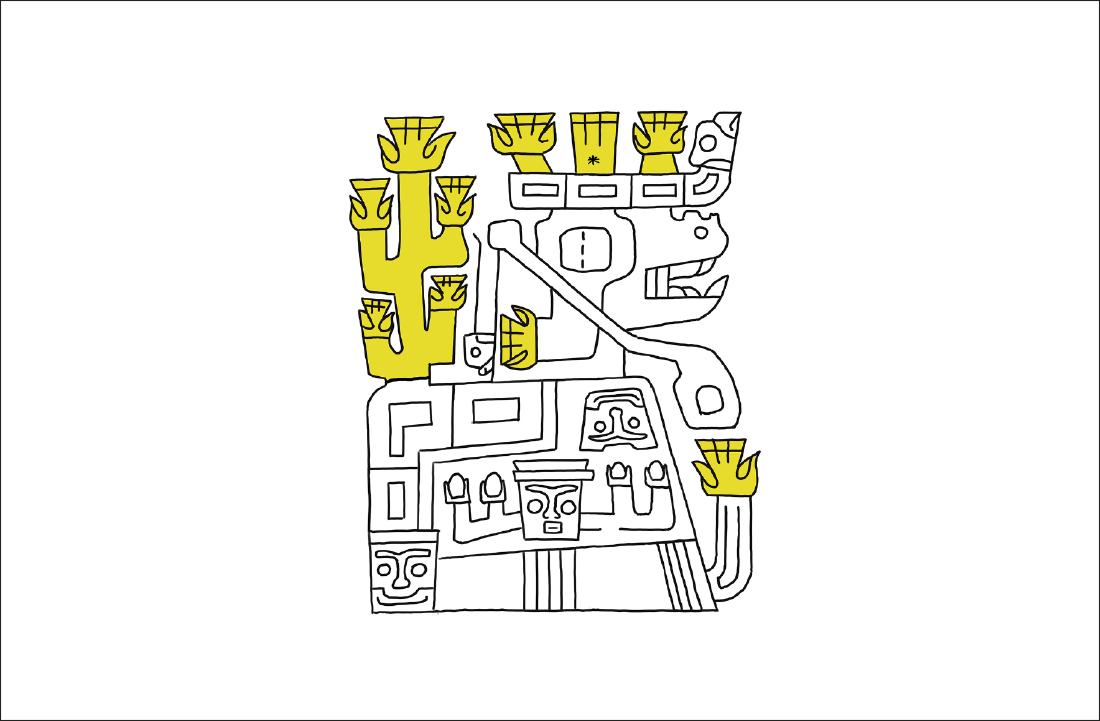
Figure 1. Llama carrying/as san Pedro cactus trunk, branches, and flowers (yellow), from the Bennett Monolith. Asterisk indicates fontanel flower (drawing by Bill Meuser, after Torres [2018: 320, fig. 11.35a]). Figura 1. Llama llevando/como el tronco, las ramas y las flores (amarillo) de un cactus san Pedro, proveniente del Monolito Bennett. El asterisco indica la flor de fontanela (dibujo de Bill Meuser, a partir de Torres [2018: 320, fig. 11.35a]).

Figure 2. Anatomical parts of cactus flowers (drawing by Bill Meuser, after Cactus Museum [n.d.]). Figura 2. Partes anatómicas de las flores de cactus (dibujo de Bill Meuser, a partir de Cactus Museum [n.d.]).
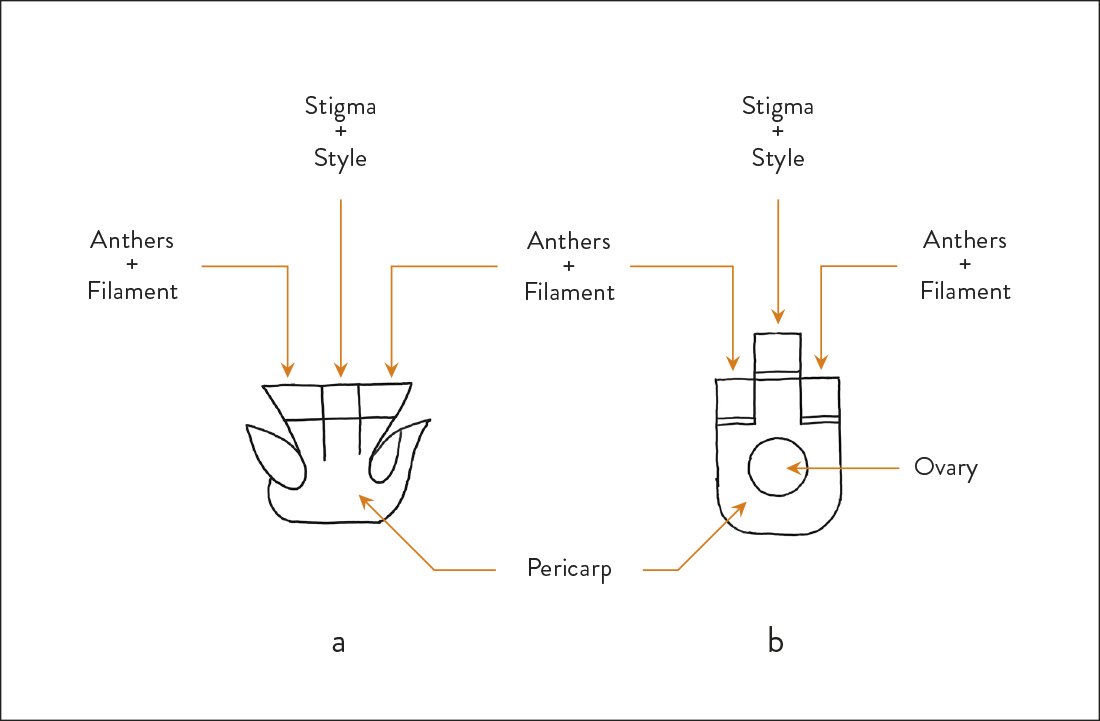
Figure 3. San Pedro cactus flower motifs in relation to the actual flo-wers: a) from the Bennett Monolith (same as figure 1); b) drawing from tunic 20 (supplementary material 1 ) (same as figure 8q) (drawings by Bill Meuser). Figura 3. Motivos de la flor del cactus san Pedro comparados con las flores reales: a) proveniente del Monolito Bennett (igual que la figura 1); b) dibujo de la túnica 20 (material suplementario 1) (igual que la figura 8q) (dibujos de Bill Meuser).
By analysis of sixty-four Wari textiles and six snuff trays (supplementary material 1), I argue that this flower motif is synecdotal (the part represents the whole); even without its cactus trunk and with reduced elements, it stands for the sacred plant and clearly labels its visionary practitioners. San Pedro flower motifs occur throughout staff-bearers (figs. 4 and 5). Staff-bearer has overlapped with staff deity in the literature, despite Anita Cook’s (2012: 107-108) admission that deities embodying the Humanistic worldview are antithetical to Andean culture, with its animated universe and concept of huaca (sacred force/object/place). Therefore, here I am calling staff-bearers/Staff Deity, Transforming Beings to better characterize figures whose modifying adjectives include animals, sacred plants, human victims, heads, and musical instruments (e.g., fig. 5 panpipes). Being does not presuppose the figure is a human, shaman, spirit, or divinity; indeed, it may be all of those in shamanic cultures. These figures are extremely elaborate, made up of at least 180 distinct parts in a typical Wari tunic (Stone 1987, vol. 2: figs. 1-10, 1-18A1). They encapsulate shamanic trance culture in all its complexity.
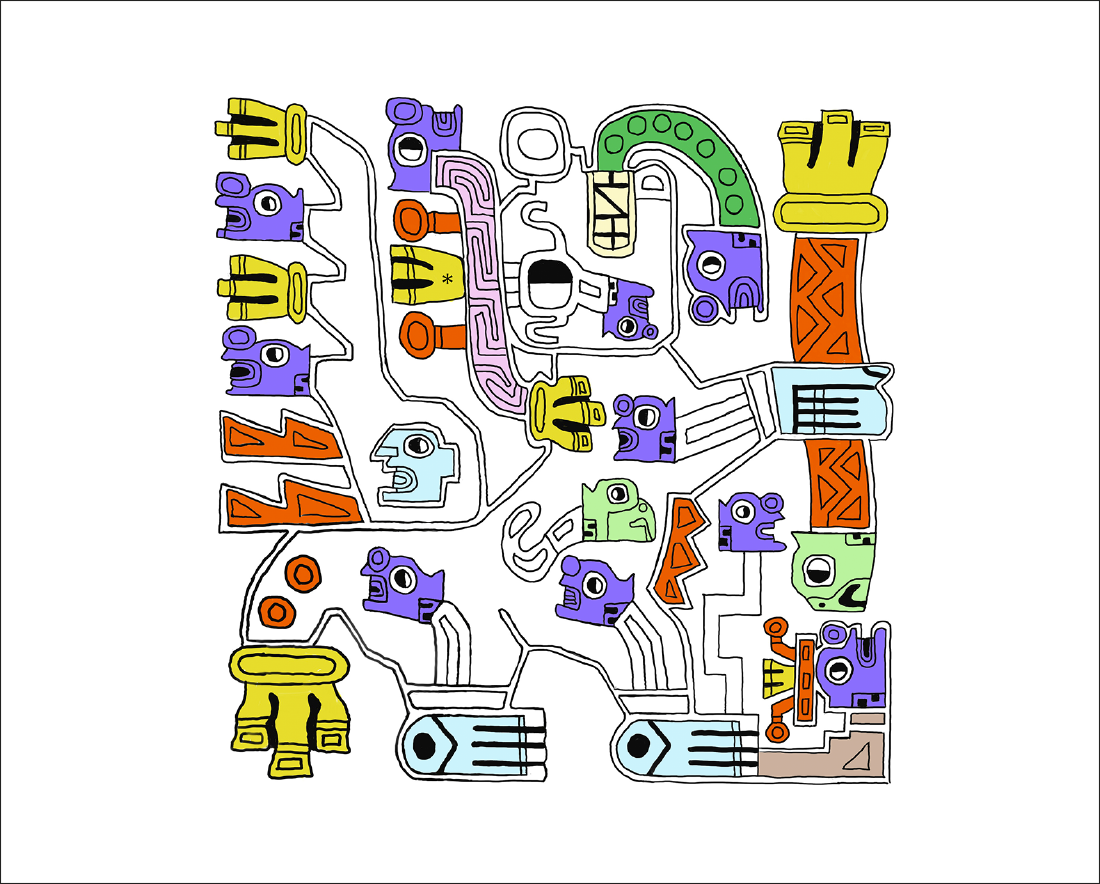
Figure 4. Transforming Being (supplementary material 1: tunic 51). San Pedro flower motifs (yellow) (same as figures 8d, l, and m); feline mouth and crossed canines (light yellow); Anadenanthera-related imagery (orange) (same as figures 20d and o; 25b, d, and l); vocalization emanation (dark green) (in addition to those in figure 13); condor head (light green); animal head with human mouth, animal nose and ear, and condor ruff (purple); human head, feet, and hand (turquoise); headband (pink); possible cactus sprout from foot (light brown) (fig. 18) (drawing by Bill Meuser, after Conklin [1970: fig. 6]). Figura 4. Ser en Transformación (material suplementario 1: túnica 51). Motivos de flor de san Pedro (amarillo) (igual a las figuras 8d, l y m); boca y caninos entrecruzados de felino (amarillo claro); motivos relacionados con Anadenanthera (naranjo) (igual a las figuras 20d y o; 25b, d y l); emanación de vocalización (verde oscuro) (además de los de la figura 13); cabeza de cóndor (verde claro); cabeza de animal con boca humana, oreja y nariz de animal y gorguera de cóndor (morado); cabeza, pie y mano humana (turquesa); diadema (rosado); posible brote del cactus saliendo desde el pie (café claro) (fig. 18) (dibujo de Bill Meuser, a partir de Conklin [1970: fig. 6]).

Figure 5. Tunic 4 (supplementary material 1), featuring female panpipers with vocalization emanations (same as figure 13a). Figura 5. Túnica 4 (material suplementario 1), presenta zampoñeras con emanaciones de vocalización (igual a figura 13a).
Clearly, “staff-bearer” cannot account for a series of beings holding many different items. A nude, bound person (supplementary material 1: tunics 1 and 8), a bow and arrow (supplementary material 1: tunic 39), or an axe (supplementary material 1: tunic 40) are not staffs. Instead of staff, I propose held entity, given the embrace of variation in Wari-Tiwanaku art. Thus, the held entity acts as a place holder for many messages, not one specific or even a fully material entity (i.e., they can be symbolic and/or visionary). Not just carrying things, these figures’ main attributes capture them in the process of turning into many other beings during trance (Stone 2011).
Moreover, no actual Wari or Tiwanaku staffs seem to exist. Patricia Knobloch (2000: 397) mentioned modern A. colubrina wooden staffs; however, no ancient versions have apparently survived, despite this wood’s extreme hardness and rot resistance. Ancient Wari-style wooden staffs could have been preserved in Peru’s coastal sands and Tiwanaku-style ones in Chile’s Atacama Desert. Since hundreds of textiles and almost 900 wooden snuff tablets have endured in these places (Stone 1987, vol. 1: 3-4; Stone-Miller 1994: 11; Torres 2018: 290), I suggest even one staff should have been discovered by now.
Be that as it may, figures who carry more held entities would seem to rank higher on the spiritual hierarchy. Indeed, frontal-facing beings routinely carry more items, one to each side of their bodies, and their heads fully radiate plants and animals (I argue, becoming/embodying a sacred plant with its flower). Frontal pose is widely recognized as more important throughout ancient American art, from Chavín two-as-one females (Stone 1983) to the Great Goddess at Teotihuacan (Faith n.d.). It is notable –and not yet recognized in the literature– that many Middle Horizon frontal figures also are almost certainly shown as women (whether in sex or gender), according to their being depicted wearing long dresses. Usually, their garments are belted or with woven-in patterns suggesting belts (e.g., fig. 5 and supplementary material 1: mantle 2, tunics 8, 23, 40 and 56) (Conklin 1996: 392-394, plate 109: bottom row, four women wear belted dresses, their jaguar heads clearly indicating important visionaries). Cook (2012: 107) notes Wari “belted garments” without drawing a gender conclusion therefrom; however, her neutral wording nevertheless acknowledges they are not tunics, that is, not specifically male garments.
Wari ceramics clearly show what are obviously women in belted dresses, complete with characteristic long hair and tupu pins to fasten their shoulder mantles, only worn by women in the Andes (Stone-Miller 2002: 217-218; Knobloch 2013: 124, fig. 92). A purported Wari ceramic seems to depict a shield-wielding male warrior whose tunic has a black and white patterned waist area (Stolfa 2004: cover). While there are a few Wari tunics with black and white patterns woven into them (e.g., Stone 1987, vol. 3: 118, cat. No. 149; 130, cat. No. 163), the patterns cover large areas not a waist band. I am skeptical of this ceramic effigy’s authenticity and so would not consider it a reliable exception to Wari women’s versus men’s dress.(4)
Snuff trays feature many frontal beings that likewise wear women’s dresses (Torres 2018: 294, fig. 11.4f; 299, fig. 11.8f; 307, fig. 11.16a; 317, fig. 11.31f, g, i, and j). Tiwanaku sculptures also depict powerful females, including the all-important frontal Sun Gate central figure (Torres 2018: 315, fig. 11.28; 317, fig. 11.31a), some Bennett Monolith figures (Torres 2018: fig. 11.31b), and others (Torres 2018: fig. 11.31c-e). Once noticed, Wari and Tiwanaku art contain a significant presence of females/female-gendered persons. The key role they play in Middle Horizon imagery may relate to how women shamans can both produce babies and seek cures, making them the most formidable practitioners to modern peoples (Glass-Coffin 1998; Tedlock 2005). Likewise, female shamans are depicted throughout ancient American art (e.g., Stone 2011: 75, fig. 4.3; 78, figs. 4.7 and 4.8; 83, figs. 4.10-4.12, 94-104; 112, figs. 5.24 and 5.25; 128, fig. 6.5; 157-164).
In turn, the profile figures, often called attendants to reflect their subsidiary roles, seem lower in the shamanic power ranks (and universally adopt male dress, when clothed). Although still capable of feats of transformation and universally winged, the males typically carry fewer things and wear simpler headdresses. They are secondary to the central figure on the Sun Gate, being smaller, flatter, to the sides, facing her, etc. It is interesting to note that in earlier Chavín religion males or gender-neutral figures are also depicted in profile (Stone 1983).
To add depth to the question of frontal/profile Transforming Beings’ relative status, it is interesting to apply the Kichwa (Quechua) principle of camay (transferable vital energy). Linguists agree that the Wari spoke a proto- or early form of Kichwa (Mannheim 2013), the Inka language and still spoken by millions. Camay is made up of camac (the infuser, animater) in partnership with camasca (the infused, animated) (Stone 2011: 7). The camac is the overarching yet specific energy or life force of something, be it an animal such as a condor or a natural force such as thunder. As per Cook (2012) on the irrelevance of deities to Andean worldview, “gods” Illapa (Thunder), Inti (Sun), etc., are best understood as camacuna (-cuna/-kuna denotes plural). Pachacamac, the energy source for all space and time, was obviously at the top and individual huacas acted as the camacuna of lesser forces and places. Salomon (1991: 16) provides the key shamanic element, citing the colonial Huarochirí manuscript in which a shaman boasting of his flying prowess claimed, “‘I am a condor shaman’… What [he] said more literally is: ‘I am camasca of the condor.’” Here, frontal Transforming Beings would seem good candidates for camac –more powerful, all-encompassing, higher frequency– and the profile ones for the camasca, the grounding, manifesting, and particular out-picturing.
Whether frontal, profile, or sometimes a combination of the two (e.g., supplementary material 1: tunic 6), a Transforming Being is laden with sacred plants. A cactus- or vilca-based held entity or headdress announces what the shaman ingested to release the many animal selves incorporated into the human form. Indeed, entheogenic flowers and condor/animal heads substitute for one another, aptly conveying the means and ends of trance experience.
It may aid our understanding to consider that sacred plants are known as “Plant Teachers” by many practicing Indigenous Amerindian shamans (e.g., Luna & Amaringo 1999: 12). Modern shamans often aver that the physical plants serve as catalysts whose spirits infuse them with healing powers (Stone 2011: 13 and 50). The spirits or “Mothers” of plants may take human form when encountered in trance (e.g., Tindall 2008: 144-147). Pablo Amaringo painted the profound unity of plants and their spirits by containing the humanoid spirit beings completely within the trees’ boundaries, their toes becoming roots and hair trunk (Luna & Amaringo 1999: 54-56). “Mothers” of plants are analogous in many ways to the camay complex.
It may be relevant to peruse Wari-Tiwanaku art for an analogous dynamic of actual plants/plant spirits. Although Transforming Beings may embody various plant motifs, I also see an essentialized plant spirit/camac motif in the round, simplified face present in a realistic cactus image (fig. 6, blue) and on snuff tray condors (Torres 2018: 295, fig. 11.5d; 298, fig. 11.7f; 319, fig. 11.34g-i). The Spirit Face also appears individually, elevated on daises, which also elevate complete frontal Transforming Beings on snuff trays, the Bennett Monolith, and the Sun Gate (Torres 2018: 319, fig. 11.32), among others. Such faces similarly animate plants in earlier Andean art: a Chavín textile’s realistic cotton plant has an abstract face at its core, seemingly representing its essential animation and human-shared life force (Cordy-Collins 1979: 53, fig. 3; 54, figs. 7-10). Rather than anthropomorphizing, which privileges humans in a way antithetical to Andean worldview and shamanic spirituality (Stone-Miller 2002: xvi), the plant’s face serves to illuminate its inherent, invisible, yet central spiritual character, as per camac. I further suggest the spirit face visually echoes and possibly was directly inspired by the concentric circles in a cactus cross-section, revealed when the plant is prepared for ritual consumption (fig. 7). This face is inside the plant, just as the camac-of-san-Pedro face is shown in art. The Middle Horizon round animating face recurs in many ways with the transformational imagery featuring san Pedro and vilca; however, full parsing of this connection is beyond the present consideration.
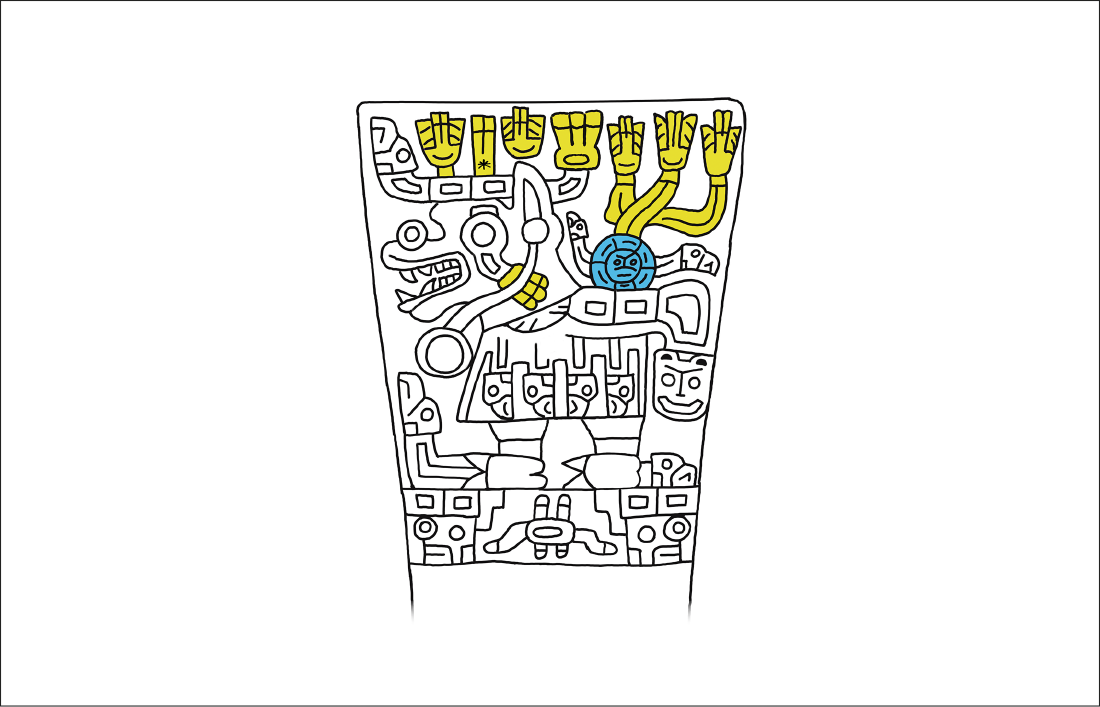
Figure 6. Handle of a San Pedro de Atacama snuff tray (Solcor 3, tomb 44) with llama portaging the san Pedro cactus (yellow), emerging from a spirit face (blue). Asterisk indicates fontanel flower. These flower motifs are in addition to those in figures 8-14 (drawing by Bill Meuser, after Donna Torres in Torres [2018: 320, fig. 11.35d]). Figura 6. Mango de una tableta de rapé de San Pedro de Atacama (Solcor 3, tumba 44) con una llama llevando el cactus san Pedro (amarillo), emergiendo de un rostro de espíritu (azul). El asterisco indica la flor de fontanela. Estos motivos de flores son adicionales a aquellos en las figuras 8-14 (dibujo de Bill Meuser, a partir de Donna Torres en Torres [2018: 320, fig. 11.35d]).

Figure 7. T. pachanoi slices and prepared brew. The arrow points to the inner concentric circle that have inspired the Spirit Face (fig. 6, blue) (Eskymaks, Shutterstock Royalty-free). Figura 7. Rebanadas y brebaje preparado de T. pachanoi. La flecha apunta al círculo concéntrico interior que ha inspirado el Rostro de Espíritu (fig. 6, azul) (Eskymaks, Shutterstock, libre de derechos de autor).
In any case, san Pedro flower motifs (figs. 8-14) were routinely combined with vilca motifs (fig. 4, orange), even directly conflated (fig. 15). A complex of visionary substances comprises Wari-Tiwanaku sacred plant iconography.

Figure 8: a-u) Three-part san Pedro flower motifs with taller central part as more naturalistic stigma/style (fig. 3a); v-x) unusually staggered three-part motifs. Note: in addition to figure 12k (drawings by Bill Meuser). Figura 8: a-u) motivos de tres partes de la flor de san Pedro, con parte central más alta, como una representación más naturalista del estigma (fig. 3a); v-x) motivos de tres partes escalonados en forma inusual. Nota: además de la figura 12k (dibujos de Bill Meuser).
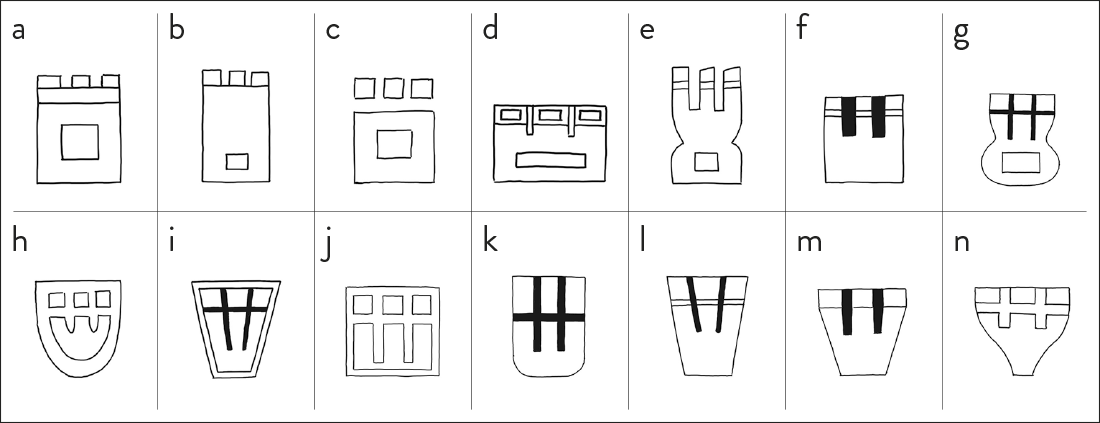
Figure 9. Three-part san Pedro flower motifs with equal length projections. Note: in addition to figures 12a and i; 13d, f, l, and n (drawings by Bill Meuser). Figura 9. Motivos de tres partes de la flor de san Pedro, con proyecciones de igual largo. Nota: además de las figuras 12a e i; 13d, f, l y n (dibujos de Bill Meuser).

Figure 10. Unusual san Pedro flower motifs: a-f) three-part; g-j) and m) four-part; k) and l) five-part; n) six-part. Note: in addition to figure 12f (drawings by Bill Meuser). Figura 10. Motivos inusuales de la flor de san Pedro: a-f) de tres partes; g-j) y m) de cuatro partes; k) y l) de cinco partes; n) de seis partes. Nota: además de la figura 12f (dibujos de Bill Meuser).
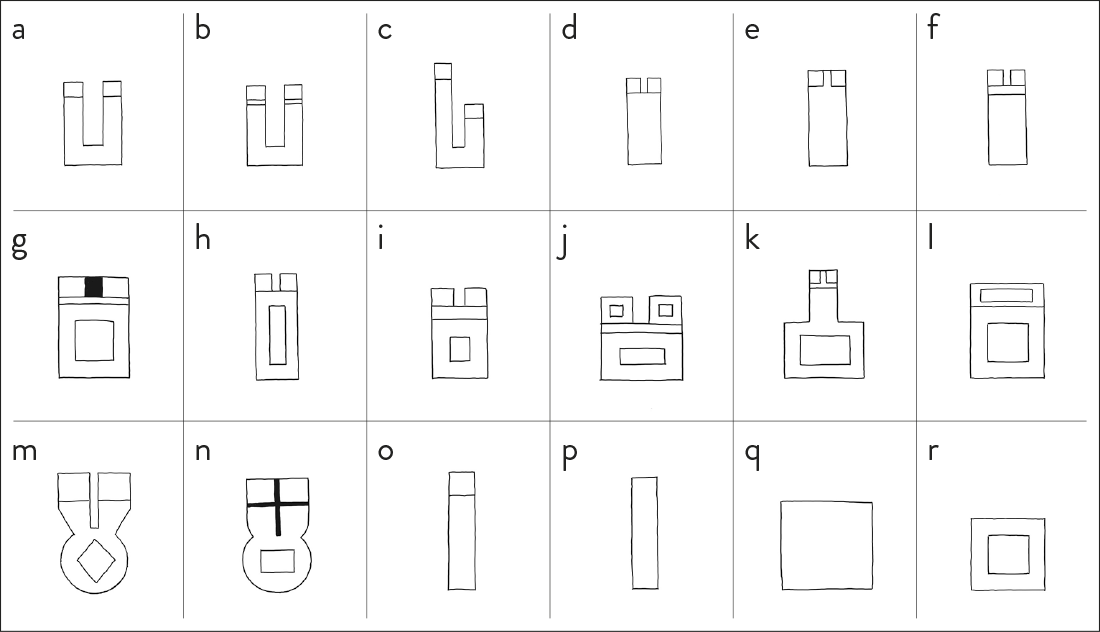
Figure 11. San Pedro flower motifs: a-k), m) and n) two-part; l, o-r) one-part. Note: in addition to figures 12d, e, g, and h; 13d (offshoot) (drawings by Bill Meuser). Figura 11. Motivos de flor san Pedro: a-k), m) y n) de dos partes; l, o-r) de una parte. Nota: además de las figuras 12d, e, g y h; 13d (vástago) (dibujos de Bill Meuser).
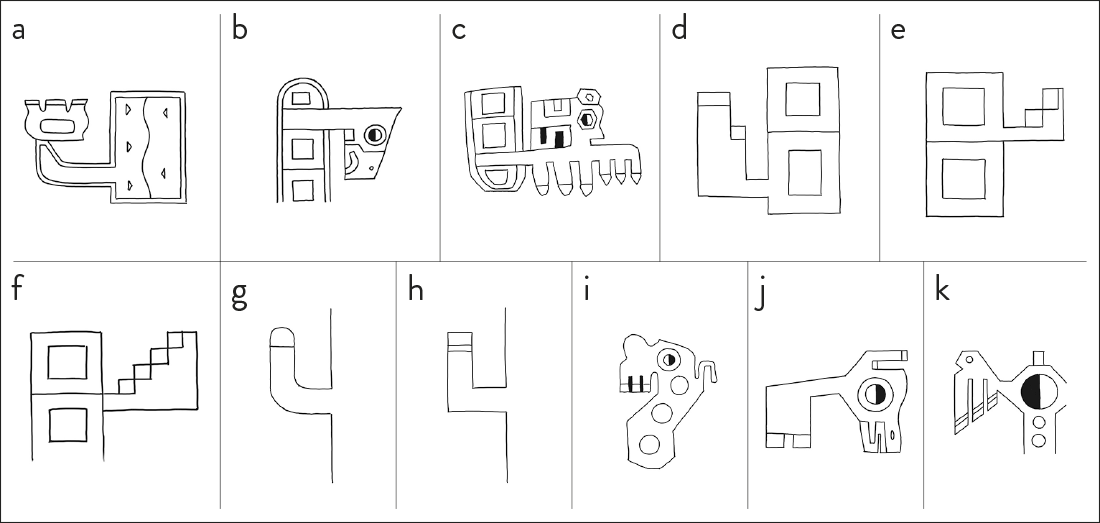
Figure 12: a-h) cactus arms on held entities and; i-k) select eyepieces. Note: in addition to figures 8-10 and 11a-n (drawings by Bill Meuser). Figura 12: a-h) brazos de cactus en entidades sostenidas; i-k) adornos oculares selectos. Nota: además de las figuras 8-10 y 11a-n (dibujos de Bill Meuser).

Figure 13: a-j) vocalization emanations in Wari textiles; k-n) San Pedro de Atacama snuff tablets; o) the Ponce Stela. Note: a) same as in figure 5; and figure 4 (green) is in addition to these (drawings by Bill Meuser). Figura 13: a-j) emanaciones de vocalización en textiles wari; k-n) tabletas de rapé de San Pedro de Atacama; o) Estela Ponce. Nota: a) igual que en la figura 5; la figura 4 (verde) es adicional a estas (dibujos de Bill Meuser).
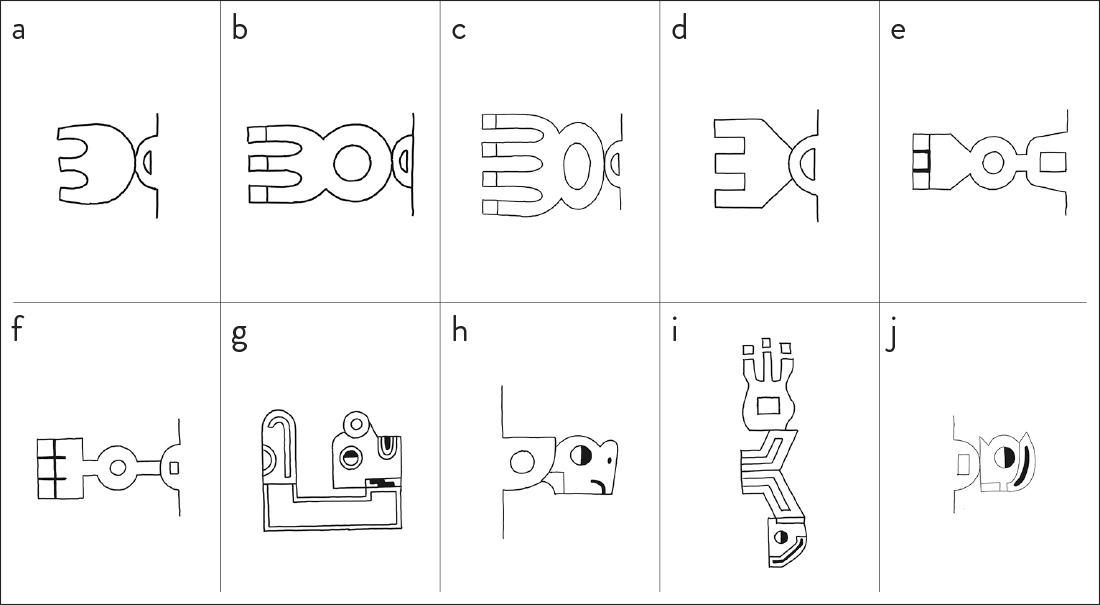
Figure 14. Aural emanations san Pedro cactus flower motifs: a-f) with ear on the right; g), h) and j) with animal/condor head substitutions, ear on the left; i) unusual version, head to left. All flowers in addition to those in figures 8 and 9 (drawings by Bill Meuser). Figura 14. Emanaciones auditivas con motivos de flor de cactus san Pedro: a-f) con la oreja a la derecha; g), h) y j) con sustituciones de cabeza de animal/cóndor, con oreja a la izquierda; i) una versión inusual, con cabeza a la izquierda. Todas las flores son adicionales a aquellas de las figuras 8 y 9 (dibujos de Bill Meuser).

Figure 15. Motifs conflating san Pedro flower and vilca imagery: a-h) both flowers; i) and j) san Pedro flower plus vilca leaves (drawings by Bill Meuser). Figura 15. Motivos que fusionan la imaginería de la flor de san Pedro y la de la vilca: a-h) ambas flores; i) y j) la flor de san Pedro más las hojas de vilca (dibujos de Bill Meuser).
TRICHOCEREUS CACTI IN NATURE AND ART
San Pedro, encompasses cacti in the family Cactaceae, genus Echinopsis, subgenus Trichocereus, and typically the species pachanoi (fig. 16) and peruviansis in Peru and lageniformis in Bolivia (also T. bridgesii and Boli-vian torch cactus, renamed Echinopsis lageniformis by botanists to avoid confusion with other earlier-named species) (figs. 17 and 18) (Först et al. 1974).
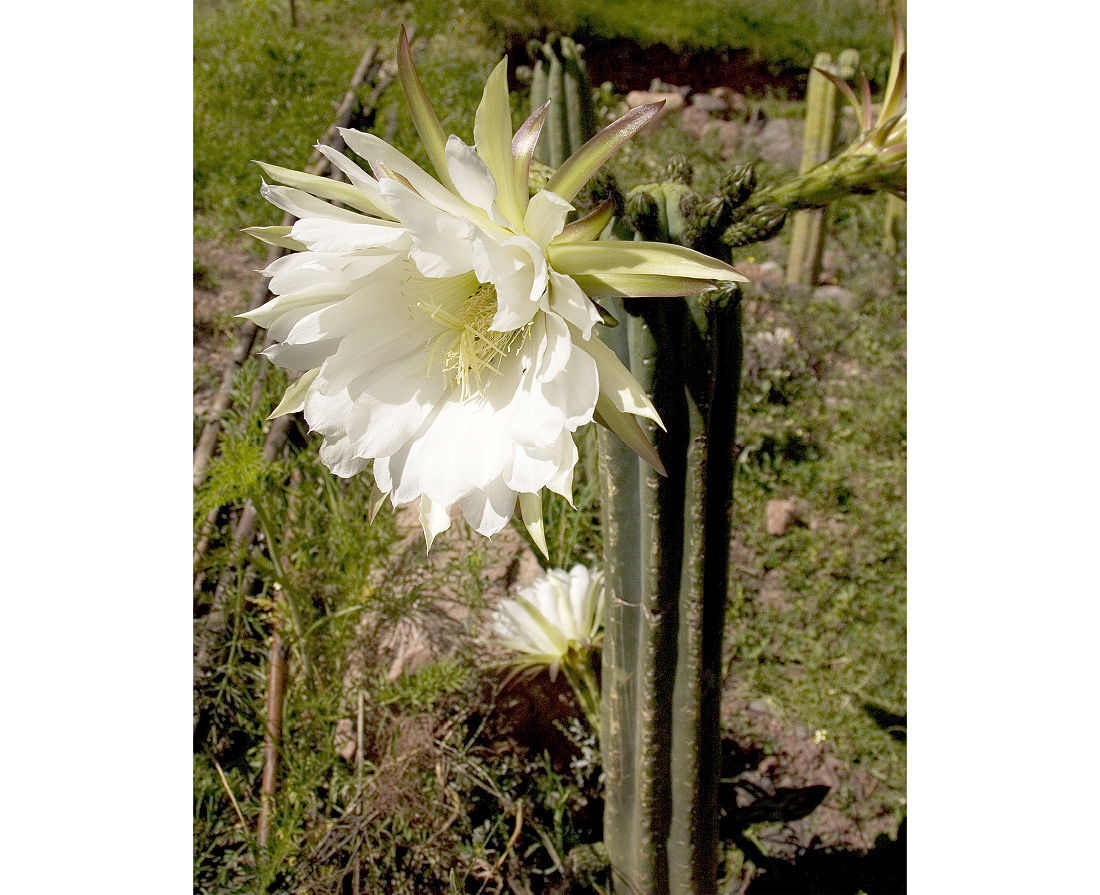
Figure 16. T. pachanoi in bloom (Geneva Photography). Figura 16.T. pachanoi en floración (Fotografía Geneva).
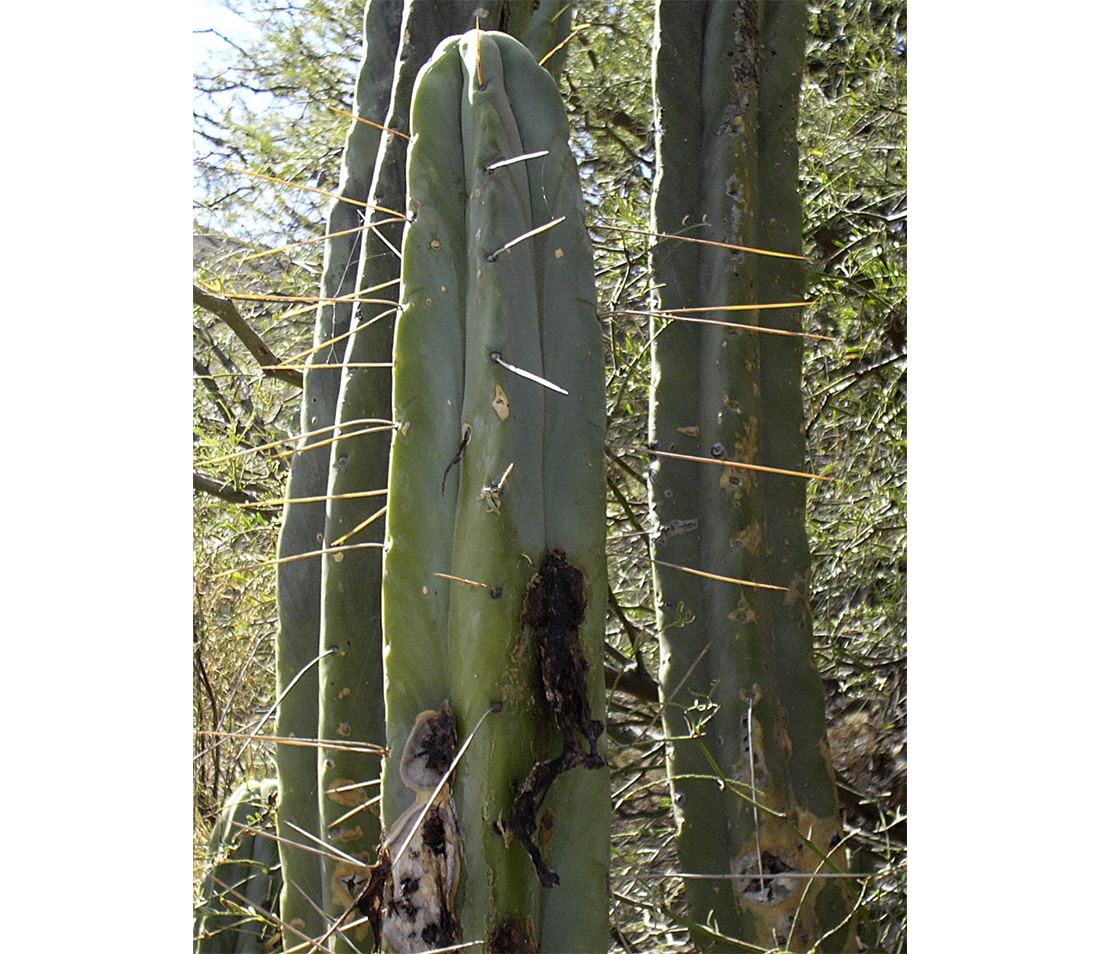
Figure 17. E. lageniformis (aka T. bridgesii, Bolivian torch cactus) near La Paz, Bolivia (photo by Evan Short). Figura 17. E. lageniformis (también conocido como T. bridgesii, cactus antorcha boliviana) cerca de La Paz, Bolivia (fotografía de Evan Short).
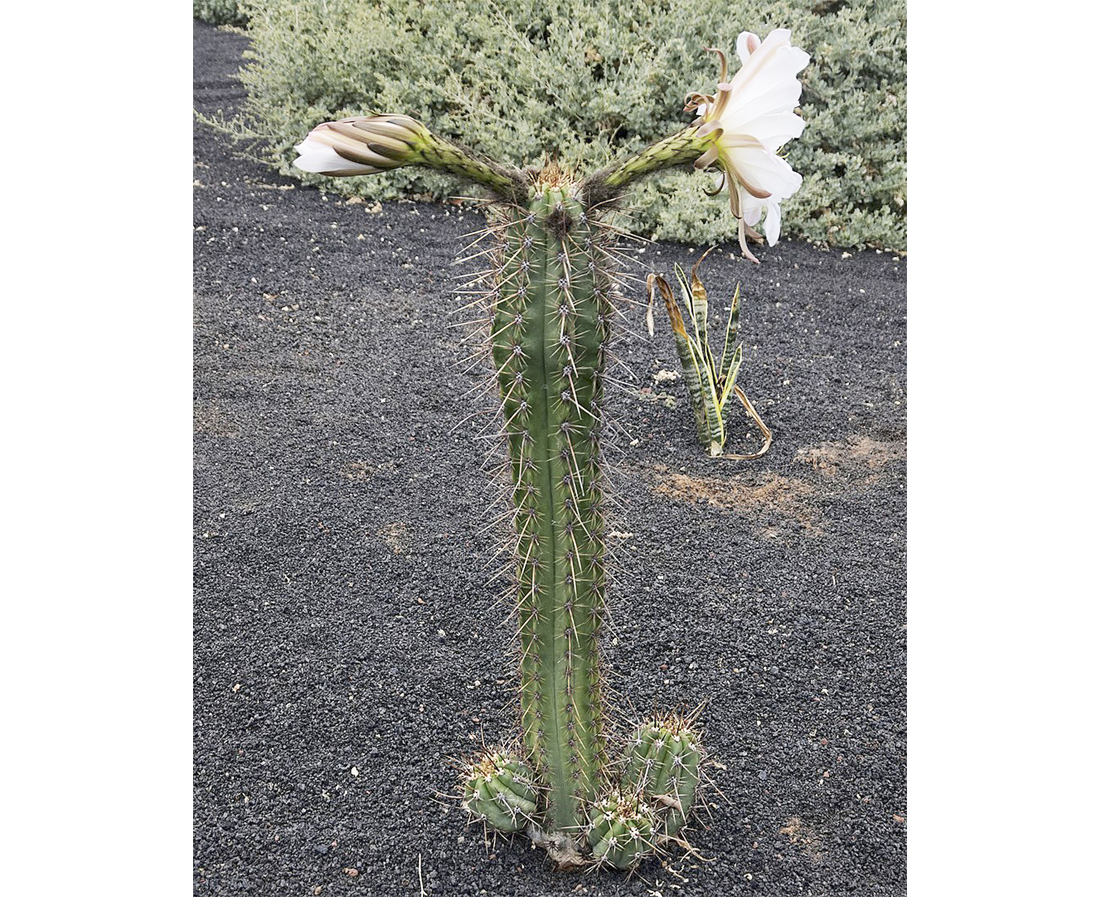
Figure 18. Young flowering E. lageniformis. Note: shoots coming from base (Maral 2017). Figura 18. Floración de un joven E. lageniformis. Nota: tiene brotes en la base (Maral 2017).
Torres (2018: 296) favors T. bridgesii as the exact species of san Pedro because of its crowning flowers and bent arms, plus it “is present in western Bolivia (i.e., near Tiwanaku) and is apparently an impressively potent species.” However, one study concluded that T. bridgesii contained a lower concentration of mescaline than related species (Ogunbodede et al. 2010). Admittedly, this study was based on a limited sample, and we await the results of a more comprehensive study. In addition, a given plant, dosage, and practitioner can alter the quantity/quality of alkaloids ingested; absorbing more material from a lower-mescaline cactus, or less from a higher one, catalyzes similar visionary intensities. Another consideration regarding which species may be involved is that T. bridgesii has very long spines, not present in Wari-Tiwanaku depictions. Finally, T. pachanoi also have highly placed flowers and can display branching arms, plus their spines are short (fig. 16). At a certain point, our quest for an exact Linnean species becomes inconsistent with the ancient worldview. Several related cacti flower extravagantly and catalyze visions; perhaps we may leave it at that.
In terms of color, the T. pachanoi and allied species are greenish blue. In general, those are rare, highly valued colors throughout the ancient Americas, whether in jadeite, indigo, or Maya blue. More to the point, there is a Wari greenstone figure holding a piece of cactus (Ostolaza 1999: 34, fig. 3). It is also interesting that the buried greenstone figure caches at Pikillacta play the same role of high-status anomaly as indigo-dyed variations in Wari tunics (Stone 1987, vol. 1: 64-66, 170, 173-174; Stone-Miller & McEwan 1990-1991; Stone-Miller 1994: 101, 115-116; Stone 2012: 158, fig. 136). Indigo is a notoriously difficult dye –necessitating esoteric knowledge and only turning blue when the fiber hits oxygen– suggesting it was ascribed shamanic transformational powers (Stone 1987, vol. 1: 66, 173-174; Stone-Miller 1994: 115-116; Stone 2017a, 2017b). Furthermore, green malachite inlays occur in San Pedro de Atacama snuff trays (Torres 2018: figs. 11.8d; 11.9c, d and f; 11.10 h and I; 11.29a-d). This striking green mineral naturally occurs in areas accessible by trade to Tiwanaku (Mindat n.d.). Presumably, since the value assigned blue-green crosses media boundaries and persists over millennia, a blue-green plant would likewise carry elevated status. It might already seem magical before ingestion; the high mescaline content and visionary experiences that result undoubtably increase its mysterious powers.
In size, the Bolivian Torch (fig. 17) grows to at least fifteen feet (Encyclopedia of Cacti 2005), and T. pachanoi (fig. 16) to over twenty (Gardenia n.d.). Whatever the species, these cacti’s scale dwarfs humans. The monumental Tiwanaku columnar stone figures immediately come to mind. Verticality is shared by humans and columnar cacti and both have arms. Plus, the large flower on top mimics the human head. A human with san Pedro attributes therefore was “larger than life” in many ways.
These types of cacti are fast growing (T. pachanoi, for example, grows a foot a year [Gardenia n.d.]). They also survive anything short of complete uprooting; removing pieces for consumption results in numerous offshoots, often at the base (fig. 18). This may inspire the san Pedro flower motifs and their animal-head substitutions consistently shown sprouting from the feet of Transforming Beings and cactus-bearing llamas (figs. 1 and 4-6) (see also Torres 2018: 317, fig. 11.31b; 319, fig. 11.34f) (supplementary material 1: snuff tray 6). More generally, this impressive capacity for growth and regeneration, veritable multiplication of itself, constitutes another magical property of cacti. In shamanic terms, such plants echo human shamans as wounded healers who are ascribed greater powers to cure themselves and others (Stone 2011: 58; see also 94, 160 on animals with strong curative powers). Instead of dying, the wounded plant thrives. In general, death and rebirth figure prominently in shamanic calling, beliefs, and experiences (Stone 2011: 44, 48, 57-58).
All san Pedro species cause similar visionary effects, including sensations of floating, flying, and suspension (Stone 2011: 44-45). The wings found on virtually all profile Transforming Beings (e.g., fig. 4) directly reference the flying feeling induced by the entheogen. Partial and full transformation into a condor –the world’s largest bird, and one that can fly for a hundred miles without flapping its wings (Fox 2020)– is also commonly shown. Transforming Beings routinely assume the raptorial curved beak with its round cere and the male birds’ white neck ruff. Headbands often end in one or two condor heads (the former with the cactus flower as the tail), plus they occur at either or both ends of held entities (fig. 4, light green). The message, “san Pedro makes you into a condor,” rings loud and clear.
Turning to the all-important flower itself (figs. 2, 3a and b, 16, 18), it is huge: up to ten plus inches in diameter and bright white in most species. Not only visually impressive, san Pedro flowers unfurl in the evening and are open nocturnally, gradually closing again diurnally (Schultes et al. 1998: 167). An opposite plant, not dependent on the sun like other ones, certainly this nighttime flowering would have been considered magical. Night is acknowledged as the best time for shamanic rituals (the mydriasis caused by partaking entheogens makes low-light conditions preferable, besides there is a universal belief that spirits appear at night). Cordy-Collins notes (1982: 147), “Traditionally, shamanic curing sessions employing the cactus occur at night when the flower blooms. Apparently the act of blooming is particularly important because the language of the [modern northern Peruvian] curing session makes continued use of the blooming metaphor […]”. Curing is dedicated to humans opening up –into higher consciousness, cosmic realms, and physical health– which makes an obvious analogy with the blooming flower.
Watching the plant over time, one sees a bud, a full-blown flower, then a return to budlike state; various stages of blooming coexist on a single plant (fig. 18). In Wari-Tiwanaku art the figure is likewise shown simultaneously in various stages of trance transformation. For instance, the body may retain a majority of human features: in figure 4 the main figure stands upright and has a human hand and feet, the disembodied head on the wing has a triangular nose, sideways squared-off ear, and no crossed canines; however, the main figure is winged like a bird. Often the head assumes a decidedly more theriomorphic character: the main figure’s head has crossed canines (characteristic of both jaguars and pumas) and a concentric nose (more probably indicating a puma, as spotted Transforming Beings, i.e., jaguar-based ones, often have spiral noses) (e.g., Stone 1987, vol. 3: 119, cat. Nº 150; Conklin 1996: 392, Plate 109, third figure from the top left corner; Stone 2011: 180, fig. 7.27a). More generally, a circle may signal the way in which animals’ nostrils face out of their snouts, not downward as in human noses. However, not all nose circles indicate felines (see the llamas in figures 1 and 6) and concentric circles (and squares) are widely used, including for the vilca bud/flower (figs. 19f; 20a, b, d, e, h-x). This imagery of simultaneous different states of being, capturing changing forms, echoes not only the experience of the shaman in trance but also how the flower (that stands for the means to such transformation) changes form; parallel transformational cycles are celebrated.
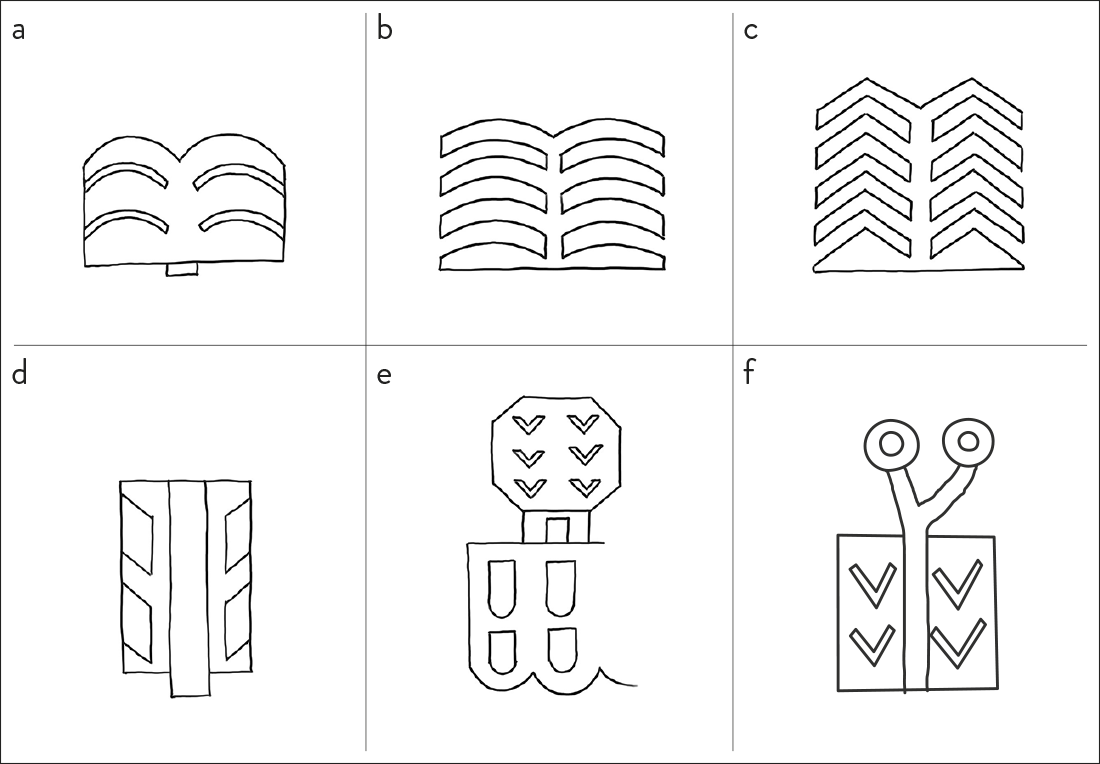
Figure 19. Vilca leaf motifs: e) shows half of pack llama’s blanket (supplementary material 1: panel 2) and the leaves are arrayed inside the circular element of the essentialized vilca bud/flower; f) the leaves inside a square flank the dual bud/flower. Note: in addition to figure 20h-x (drawings by Bill Meuser). Figura 19. Motivos de hojas de vilca: e) muestra la mitad de una manta de llama de carga (material suplementario 1: panel 2) y las hojas están dispuestas dentro del elemento circular del botón/flor de vilca sintetizado; f) las hojas dentro de un cuadrado flanquean el botón/flor dual. Nota: además de las figuras 20h-x (dibujos de Bill Meuser).

Figure 20: a-b) motifs of the vilca seed pods; c-g) essentialized seeds; h-x) essentialized flowers. Note: in addition to figure 19f (center portion) (drawings by Bill Meuser). Figura 20: a-b) motivos de vainas de semillas de vilca; c-g) semillas sintetizadas; h-x) flores sintetizadas. Nota: además de la figura 19f (parte central) (dibujos de Bill Meuser).
To go deeper into actual cactus flowering and how this process is captured in san Pedro flower motifs, it starts with a large bud attached to the stalk and then flaring into a rounded triangle (fig. 9n takes a particularly bud-like form) (Cactus Museum n.d.). The bud is protected by the pericarp; a stem-like element on a cactus flower motif may refer directly to the pericarp (figs. 8l, n and s; 10d, j, and n; 13d, f, k, l, m, and n; 14e and f). It ends in small, pointed petal-like sepals (figs. 2 and 3a). These outer stiffer leafy elements, and/or flower petals, are naturalistically rendered in the Bennett Monolith llamas’ cargo (fig. 1).
Inside cactus flowers, round eggs are concentric within the ovule, in turn inside the ovary (fig. 2). Likewise, in Wari motifs the bottom part, acting as the ovary, takes the form of a circle or oval (fig. 3b). This can be substituted with a square or rectangle (fig. 8g-i), as is familiar in this abstracting style. Whatever its exact shape, the lower part of the motif contains a smaller, similar shape referencing the ovule. Occasionally, rather than a circular or rectangular ovary/ovule, artists chose variations such as a hexagon (fig. 8k), half-circle (figs. 10c and h; 13f), or diamond (figs. 8l; 11m). As alternatives, the rounded element may become a profile face, an eyeball, or a mouth (fig. 10d, e, f and n) (see also Torres 2018: 309, fig. 11.18j). In snuff tray depictions, a simple horizontal line suffices for the ovule/ovary (fig. 13k, l and n); this is probably due to the small scale of the carving surface. In keeping with Wari style, the ovary/ovule may be ignored altogether (figs. 8e, f and v; 9f, i-n; 10b, g and i; 11a-f, o-q; 12i and j; 13m; 14a and d; 15a, b, g and j); however, the rest of the motif remains recognizable and its position on the figure stable, so this omission does not invalidate the flower identification.
In cactus flowers, the female parts (together called the pistil) include the style, stigma, and ovary. The style is taller than the other parts and is topped with a rectangular stigma (fig. 2). In accord, the cactus flower motif’s central upward thrusting element is characteristically marked by a contrasting-color tip and may be taller than the flanking filaments/anthers (figs. 3b; 8a-u; 10c, f and n; 13a-c, g-i and k). Alternatively, the projections may be equal in height (figs. 3a; 9a-n; 10a, b, d, e, g-l; 11a, b, d-n). As usual, Wari weavers will decide to invert reality, making the central projections lower than those flanking it (fig. 10m).
Beside the stigma, multiple stalks (filaments) with circular tips (anthers) constitute the flower’s male parts (the stamen). The halo of long, pointed, soft petals open around the inner parts as the san Pedro flower blooms. Petals lack the tips characteristic of the stigma and anthers; since Wari cactus flower motifs are tipped in almost all cases (exceptions being figs. 10b and d; 11p and q; 14a and d; 15f and g), they apparently privilege the inner elements of the actual flower.
Thus, the transformative moment when the bud reveals its interior seems crucial. Kichwa has an applicable term:
ukhu is the Quechua [Kichwa] concept that posits that the inside, even when not visible outwardly, is actively influential to the whole […] this signals […] balance […] between the seen and the unseen, between the understood or potential and the apparent or manifest […]. Yet in order to recognize that something is hidden, that thing may also need to be slightly revealed (Stone 2017a).
The aforementioned Chavín cotton plant spirit face is another Andean instance of ukhu. Likewise, in Wari panel 1 (supplementary material 1), showing the fetal cria (baby llama) privileges the interior but reveals it magically. Likewise, in panel 2 (supplementary material 1) the crias are shown both in the moment of becoming manifested (being born) and fully visible after birth (standing next to their mothers). The camac-of-san-Pedro face is also located on the interior (fig. 6, blue), but shown outwardly in the artistic rendition (the slightly revealed aspect of ukhu). Importantly, the “x-ray,” i.e., ukhu, perspective is frequently reported during visions (Stone 2011: 27, 192).
When fully revealed, the san Pedro flower petals expand outwards in all directions; this is aptly recreated around frontal Transforming Beings’ heads. The open flower also embodies one of the primary types of movement perceived during visions: radiating (Stone 2011: 36-38).
With the cactus better understood, we turn more in depth to the various cactus flower motif interpretations.
There are myriad variations on the san Pedro flower motif (figs. 8-14). In a corpus of sixty-four textiles plus six snuff trays, over a hundred types occur. The logic of abstraction, commonalities in basic form, and its positions in the Transforming Being allow identification given the barest minimum of clues (fig. 11o-q). In Wari art overall, very few visual clues may be necessary to recognize a given motif (Knobloch 2000: 391). Ranging from readable to abstract, the motif serves as a ubiquitous signal of a visionary state, the many iterations possibly mirroring the multitude of visual experiences incorporated into trances (Stone 2011: 18-20). The large number of motif versions also belies the notoriously relentless Wari creativity.
In technical and formal aspects of Wari tunics, the same kind of regularity modified by intentional irregularity appears (Stone 1986: 141-142; Stone 1987, vol. 1: 112, 148-149). Another apt concept for the prominence of irregularity is the Kichwa and Aymara term q’iwa, denoting that which is out of place, different, aberrant, yet important (Stobart 1996; Stone 2017a). Wari textile design epitomizes the q’iwa in that “one of the rules is to break the rules,” the most extreme case a tunic with 479 stepped frets and only one profile face (Stone 2012: 158-159, fig. 136). To an Andean way of thinking, single people are q’iwa, because being part of a pair is the proper, balanced state. Indeed, particularly q’iwa san Pedro flowers consist of single uprights with no other distinguishing features, though they occur in the same positions as usual ones (figs. 11o-q; 13d [offshoot]). Other q’iwa flower motifs feature: asymmetry (fig. 8v-x), four- to six-part versions (figs. 10g-n, 12f and 14c), embedded split eyes (fig. 10e and f) or whole profile faces with split eyes (fig. 10d), triangular tips (fig. 10k), or two uprights (fig. 11a-n). It is worth noting that embedded split eyes are also found elsewhere in Wari figures’ bodies (e.g., supplementary material 1: tunic 21, knees; tunic 9, feet; tunics 30, 47, and 48, torso). As an adjective signaling otherworldly sight, the vertically split trance eye appears in frontal, profile, and partial-profile figures, males and females. It is ubiquitous in Transforming Beings and does not occur on purely humanoid figures (e.g., Knobloch 2013: 124, fig. 92; 137, fig. 118). Furthermore, eyes within or connected to various body parts naturally convey seeing as touch, hearing, or smell, i.e., synesthesia, a commonly reported occurrence in visionary perception (Stone 2011: 22-24, 198-200).
In terms of the san Pedro flower motif and its positions, headdresses and held entities are its most common locations. In the headdress, they consistently read as the tail of an animal whose body is the headband. For example, in figure 4 the yellow flower motif ending the headband is its tail, the pink headband connects to the purple animal head. One or more san Pedro flower motifs also typically project up from the headband, or, in the case of frontal figures, the face surround. San Pedro flowers often occupy the top center of the head or headdress, what marks the fontanel (the top of the skull, last to fuse after birth, attributed as the place where consciousness enters and exits in shamanic cultures). Not only does its centrality draw attention to it there, but fontanel san Pedro flowers tend toward greater simplicity, rectilinearity, and abstraction than other versions, even those elsewhere on the figure or in its headdress (figs. 1, 4, and 6, yellow with *). I have argued that a general emphasis on the head, cephalocentrism, characterizes the visionary aesthetic. Specifically, the fontanel is considered the point of entry/exit for out-of-(human)-body experiences (Stone 2011: 76-85). Indeed, Amerindian shamanic art commonly highlights the fontanel (Stone 2011: 80, 100, 153, 190, 192 and 199). The distinctive fontanel san Pedro flower motif is present on the Bennett Monolith llamas, snuff items, textiles, and carvings (Torres 2018: 294, fig. 11.4a and f; 299, fig. 11.8b and f; 302, fig. 11.11e; 317, 11.31a-c and e). Plus, I suggest that its formal reduction echoes the abstract quality of visions, which concentrate reality into essentials (such as human beings as one with other species).
Other notable flower motif placements include: the eye surround (eye emanations, formerly tear bands, aka eyepieces) (fig. 12i-k), mouth projections (vocalization emanations) (fig. 13a-n), and ear ones (aural emanations) (fig. 14a-f and i). Each speaks volumes as to visionary experience, renowned for its vividly multi-sensory character.
In keeping with the Wari preoccupation with the eye, the eyepiece often combines small, upwardly bent cactus-like arms with tips with san Pedro flower motifs or their animal-headed substitutions (fig. 12i-k) (eyepieces offer too many variations to detail here; this element would be a study in itself). Most realistically, held entity cactus arms display the full flower (fig. 12a), which can be reduced to one or expanded to up to four tips (fig. 12d-h). In addition, the arm can become a condor head (fig. 12b) or a transformational bird with an animal head and human mouth (fig. 12c). Similarly, the eyepiece may display a three-part flower and a single arm (fig. 12i), a two-part flower and two-tipped arm (fig. 12j), or a three-part flower (fig. 12k). In eyepieces, cactus flowers and arms convey that cactus vision is in force. The sacred plant can be both part of the practitioner (eyepiece) and an extension thereof (cactus-based held entity).
Vocalization emanations, like Mesoamerican “speech scrolls” (Stone 2011: 182) make a range of sound making visible, from chanting to singing to talking or shouting. These emanations may well relate to the modern shamanic power songs (ícaros) (Luna & Amaringo 1999: 13ff), tarjos (Glass-Coffin 1998: 118-119, 123), and/or to dramatic shamanic proclamations, such as banishing malevolent spirits (Stone 2011: 58, 62). Modern shamans produce bizarre sounds (e.g., Munn 1973: 107), even speak a language unknown to them in daily life (Stone 2011: 51). Importantly, due to the dual consciousness characteristic of ingesting sacred plants, visionaries can narrate their trance experiences as they happen (Stone 2011: 16-17).
In a vocalization emanation, the cactus flower often caps a bent emanation coming from a transforming being’s mouth or beak (see also Rowe 1996: 402). Again, an animal head may be substituted (fig. 13e). Some vocalization emanations undulate (fig. 16a-d), another prevalent type of visionary movement (Stone 2011: 36-38; Oster 1965). The waviness may specifically convey vibrato or other unearthly sounds (Stone 2011: 20-21). Wari vocalization emanations either bend up from the mouth (fig. 13a-f, j and n) or dynamically bend up, over, and down (fig. 13g-i, k-m). They may be very simple (fig. 13j) or contain the meander pattern (fig. 13g) that occurs mostly around the heads of frontal Transforming Beings, conveying high status. One iteration (fig. 13d) splits the emanation into two parts, the main one cactus flower-topped and the other another stem or arm topped with an aberrant san Pedro flower, which could be another cactus arm with a very abstracted flower. Whatever their form, vocalization emanations are shown moving through space, echoing how sound travels. Such seeing of sound also allows viewers to gain insight into visionary synesthesia.
As mentioned above, certain vocalizers also wield antaras/siku (panpipes in Kichwa and Aymara, respectively) (fig. 5) (supplementary material 1: tunic 28). Although they have square human teeth, their vocalization emanations undulating and topped with the san Pedro flower motif seemingly identify them as visionary-based ritualists. It is not possible to both sing and play the antaras simultaneously, so the vocalization emanation may reify the pipes’ sound or indicate the alternation between vocalizing and playing. Wari-Tiwanaku art is almost never narrative (the birthing llamas an exception), so we should avoid tying its imagery down to literal interpretations.
In turn, aural emanations show the cactus flower motif coming out of/into a Transforming Being’s ear (fig. 14a-f); in one case the flower, upside down, is the ear (fig. 8g) (supplementary material 1: tunic 42). Such conflation signals hearing dictated by the entheogen; inversion is also a recurring way ancient American artists characterize the visionary realms as fundamentally different from our own (e.g., Stone 2011: 4ff). Aural emanations aptly communicate the shaman hearing the plant spirit; spiritual communication is fundamental to visionary experience, pursued to acquire guidance, cures, and divinatory information from non-human beings and bring it back to the human sphere (Stone 2011: 45-48, 65). Overall, enhanced hearing, like the other sensory modes, is basic to trance (Stone 2011: 21). Ancient American artists exaggerate shamans’ hearing capacity in various ways (Stone 2011: 79).
Some aural emanations take the typical three-part flower form (fig. 14a, b, d-f); however, one adopts the aberrant four-part format (fig. 14c). Sprouting from the main figure’s ear area, one particularly anomalous version (fig.14i) features two diagonals, one ending in a san Pedro flower and the other in an animal head. As before, substitutions of animal heads for san Pedro flowers (fig. 14g-j) powerfully yet succinctly join the means and the ends of trance.
Now we turn to the san Pedro cacti’s companion, A. colubrina or vilca.
ANADENANTHERA COLUBRINA IN NATURE AND ART
This plant (figs. 21-24) has previously received scholarly attention (Stone n.d.; Cordy-Collins 1982; Torres 1987, 2018; Knobloch 2000; Torres & Repke 2006; Burger 2011). However, I will expand upon motifs representing the diagonal leaves (fig. 19a-f), seed pods (fig. 20a and b), individual seeds (figs. 20c-g; 25h-j), and essentialized flowers (fig. 20h-x). I will also add a new motif, the bark (fig. 25a-h, j and k), as well as call attention to vilca-based vocalization emanations (fig. 13h, i, o). Finally, vilca and san Pedro motifs are combined and even conflated in various ways (fig. 15); this differs from some confusion in the literature regarding the identification of the two flowers on their own.(5)

Figure 21. A. colubrina leaves, buds, and flowers (Culbert 2007). Figura 21. Hojas, botones y flores de A. colubrina (Culbert 2007).

Figure 22. “Paired” seed pods of A. colubrina. Note similarity to figure 20b (Medeiros 2010). Figura 22. Vainas de semillas “pareadas” de A. colubrina. Nótese la similitud con la figura 20b (Medeiros 2010).
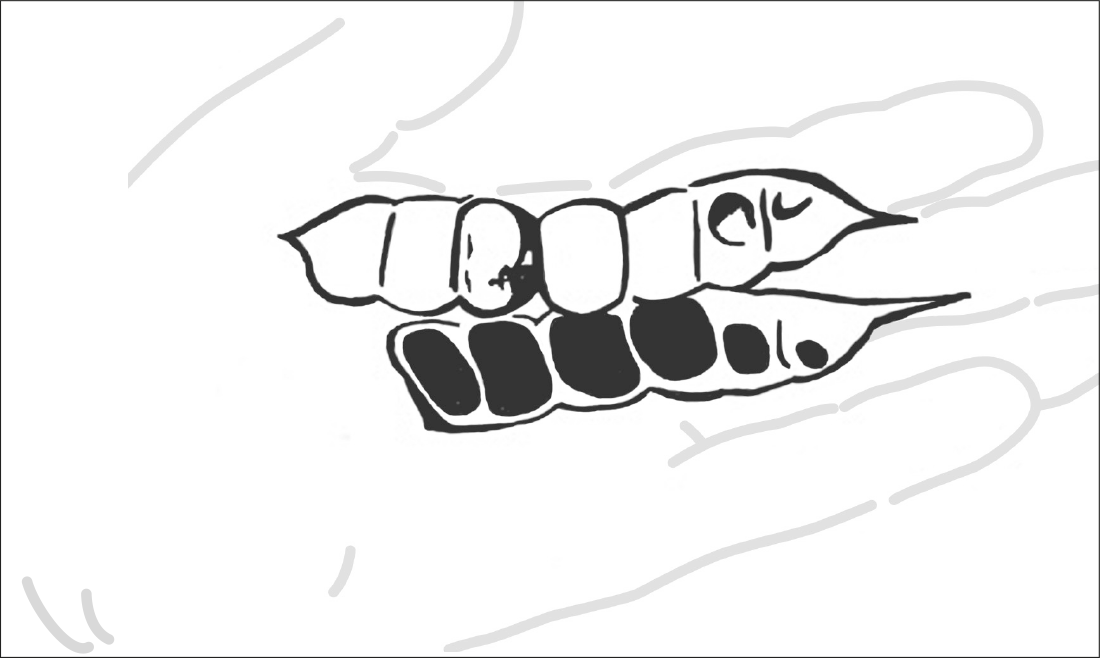
Figure 23. Smaller and more squared-off seed pod of A. colubrina (versus peregrina, fig. 26). Note similarity to “concentric squares” (fig. 25g, j-o) (drawing by Bill Meuser, after DoctorLib [n.d.]). Figura 23. Vaina de semilla más pequeña y cuadrada de A. colubrina (en comparación con peregrina, fig. 26). Nótese la similitud con los “cuadrados concéntricos” (fig. 25g, j-o) (dibujo de Bill Meuser, a partir de DoctorLib [n.d.]).
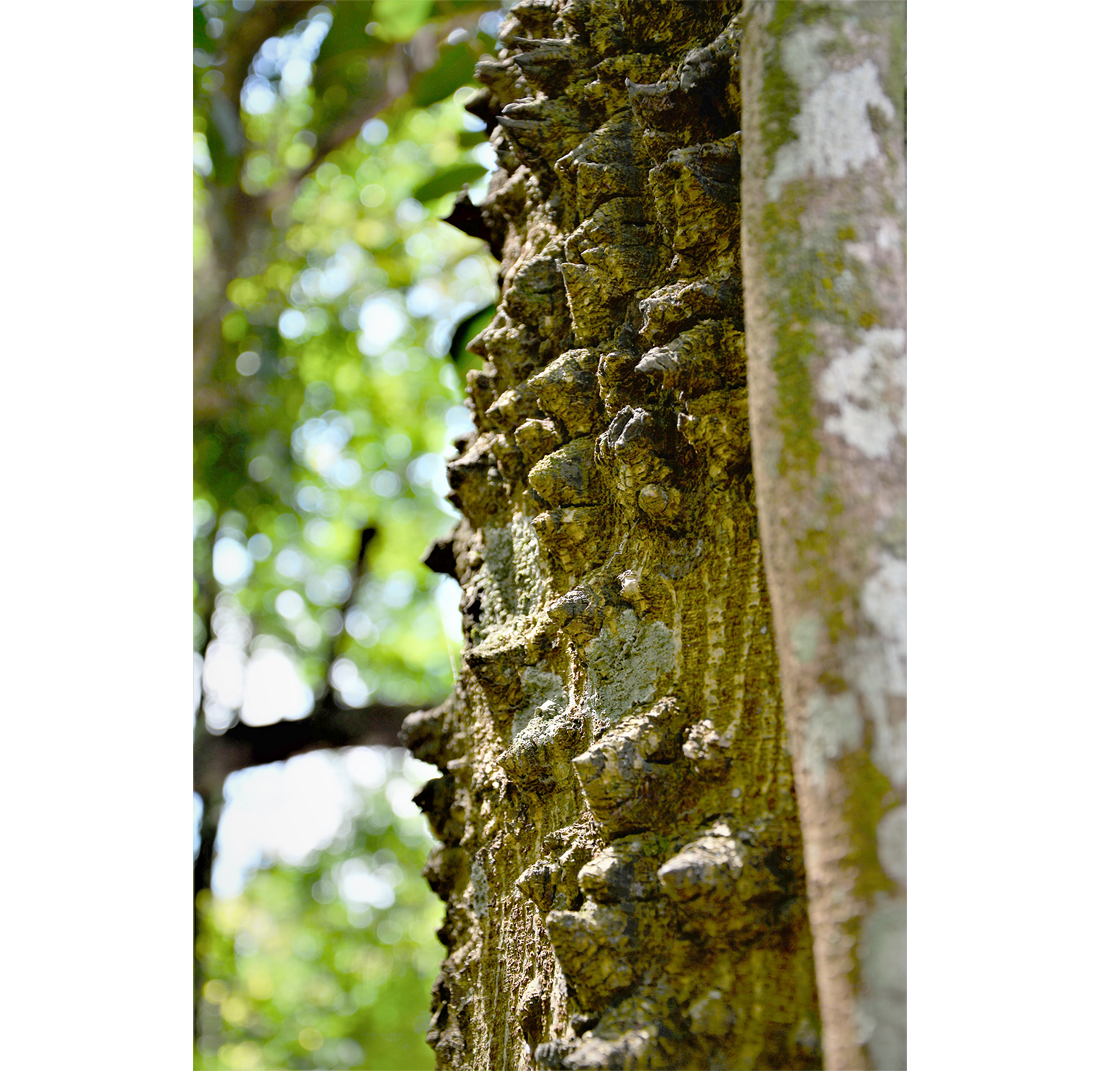
Figure 24. The trunk of the A. colubrina tree with its markedly triangular projecting bark (Nancy Ayumi Kunihiro Shutterstock Royalty-free stock, photo id: 1203279682). Figura 24. El tronco del árbol de A. colubrina con su corteza saliente marcadamente triangular (Nancy Ayumi Kunihiro Shutterstock, libre de derechos, id de foto: 1203279682).
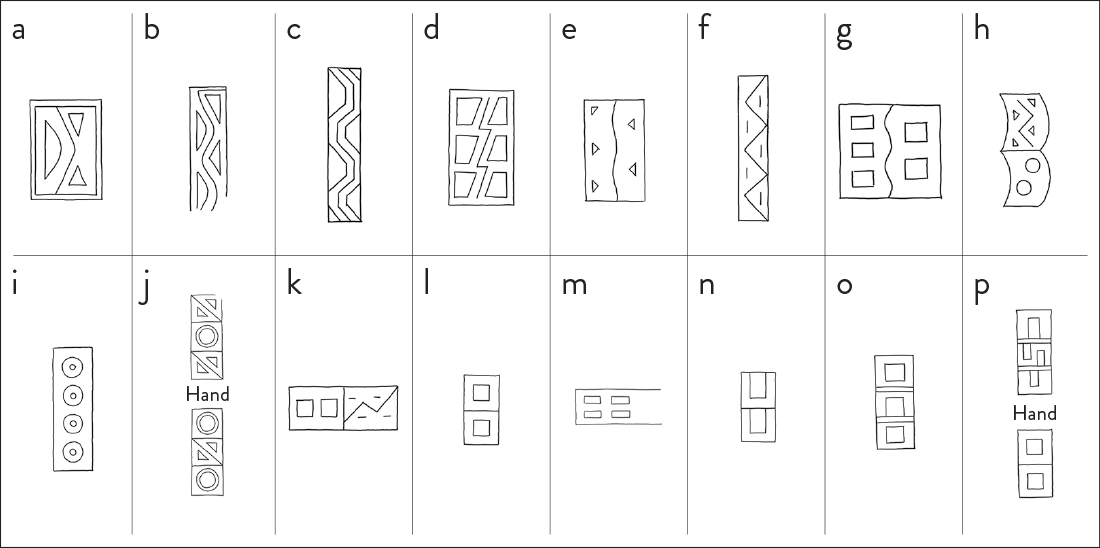
Figure 25. Motifs representing vilca bark. Note: figure 4 held entity is in addition to these (drawings by Bill Meuser). Figura 25. Motivos que representan la corteza de vilca. Nota: la entidad sostenida de la figura 4 es adicional a estos (dibujos de Bill Meuser).
A. colubrina var. cebil (Leguminosae-Mimosoideae) grows in the southern three-quarters of South America, in contrast to the more northerly A. peregrina with its much larger and longer seed pods (fig. 26, as compared to figs. 21-23) (Altshul 1964). It grows from c. 1,000 to 7,000 feet of altitude, lower than san Pedro cacti but still from mid-highlands to near the coast. Spanning the lower areas accessed through Wari-Tiwanaku conquest, trade, and influence, it potentially projects a political message concerning the reach of the highland empires. It is a very fast-growing tree (up to one meter/year). Thus, like san Pedro cacti, vilca would seem to contain an abundance of life force. Able to reach fifty feet tall, it is impressively sized, also like many cacti.

Figure 26. Seed pods of the A. peregrina from Venezuela. Note these seed pods are longer, more bulging, and rounded than colubrina (figs. 22 and 23) (Zavadil 2007). Figura 26. Vainas de semillas de la A. peregrina de Venezuela. Nótese que estas vainas de semillas son más largas, abultadas y redondeadas que en la colubrina (figs. 22 y 23) (Zavadil 2007).
Importantly, it has heretofore escaped scholarly attention that the bark is unusual and visually impressive, covered with projecting spiky triangular, scaly thorns (fig. 24). I identify these properties in the ubiquitous Wari zigzag-based motifs that characterize held entities, headbands, belts, even the edges of bodies (figs. 4, orange from the belly and the lower wing; 25a-h, j, and k). Almost anything long, with parallel sides, i.e., tree trunk-like, can be given this label. Bark patterns encircling snuff trays certainly reinforce that the actual vilca snuff was cradled in the tray’s depression (e.g., Torres 2018: 318, fig. 33.11i). Referencing the jagged bark would serve as a shorthand identification of the species and its various strong healing effects (most visions are undertaken for healing purposes, after all). It is also important to recall that visionaries, across various entheogens, repeatedly see zigzag patterns during trance (“undulating visionary movement”) (Stone 2011: 3ff.). Another visual connection between means and ends is cleverly conveyed.
Interestingly, steeped into a tea, the tree’s bark has significant anti-inflammatory and pain-reducing qualities and is still used in healing today (Santos et al. 2013). Since bark contributes to the curing aspects of this tree, it makes further sense that it would be represented in the vilca iconographic configuration.
The tree, being a mimosa, has leaves that are fernlike (fig. 21), branching in diagonal pairs (compound-doubly pinnate). This key characteristic is evoked in the various iterations of the vilca leaf motif (fig. 19). The leaves close at night and open during the day; this daily pattern of change echoes the san Pedro flower’s but differs in being familiarly diurnal. Perhaps because the leaf motifs are peaked, they may be confused with maize; however, they may bend either down (fig. 19a-c), as in maize leaves, or up (fig. 19d-f), as in vilca. Indeed, figure 21 indicates that vilca has drooping branches with upward-facing leaves, so either direction is correct. Furthermore, maize leaves are staggered (alternate) along the stalk, not directly across from each other (opposite) as in Anadenanthera. In addition, in an important Wari tunic (supplementary material 1: tunic 56) maize is clearly depicted with silk-topped stalks and ukhu husks containing cobs dotted with three kernels, again echoing visionary x-ray experience. Thus, maize is iconographically distinguishable from vilca (see note 6).
When the tree is in fruit, the diagnostically large, dangling seed pods appear. As in renderings of the pregnant llama, the cactus flower motif, and maize, Wari art universally shows ukhu view of these seed pods. It is not the pods themselves that hold the spiritual power, but the hidden seeds nestled within them are the entheogen. Yet the motif shapes do rather realistically reflect the various appearances of the pods, from long and full of up to eight beans (Torres 2018: 309, fig. 11.18a), to naturally straighter pods and squarer seeds (fig. 23; Torres 2018: 308, fig. 11.17 lower right) that seem to inspire the widespread concentric squares (fig. 25g, k-p). In Nature, pairs of seeds separated by constrictions also occur (fig. 22); the Ponce Stela (Torres 2018: 309, fig. 11.18d) and a Wari bag (fig. 20b) (supplementary material 1: bag 1) directly illustrate this type. Three sets of two seeds within a rectangle are also depicted on the torso/tunic of another tunic with panpipers, again indicating visionary ritual music is taking place (fig. 20a) (supplementary material 1: tunic 53). Three seeds in a pod are likewise featured on the Bennett Monolith and Ponce Stela (Torres 2018: 309, fig. 11.18b, as the frontal figure’s body and arms) and four-seed pods also band the Ponce figure’s arms (Torres 2018: 311, fig. 11.21). Multiple seeds fill the held entity in one textile as well (fig. 25i) (supplementary material 1: tunic 23).Vocalization emanations also contain multiple seeds (fig. 4, orange; fig. 13i).
Extracted from the actual pods, vilca seeds are roasted, pop open, then are ground to be sprinkled into beverages, snuffed, or smoked. In Wari-Tiwanaku art, the all-important seeds act as independent motifs, either as solid or concentric circles (fig. 20c-e). In one instance, the circle has been filled with a split-eye (fig. 20e), in keeping with the Wari embedding them in many places to signal trance content. This example communicates that it is indeed the seed that turns the practitioner’s vision supernatural.
Such circles are repeated as the entire field of actual and depicted garments. Many concentric seeds, some of which are assigned the prestigious blue-green, are woven into the field of an exceptional, huge mantle (supplementary material 1: mantle 2). Seeing things multiplied into infinity is a common visionary experience (Stone 2011: 19-20). The first mantle’s similar field of concentric circles is bordered by a zigzag containing repeated abstract faces with upturned mouths (fig. 20f). These could represent the bark-zigzag filled with beans, shown as ecstatic to evoke their visionary effect. In turn, they could also convey the spirit face of vilca, according to a similarly simple one carved in the center of a snuff tray (Stone 2011: 305, fig. 11.14e). In sculpted form, the Ponce Stela’s pants/legs alternate the concentric circles with a more inflected vilca bean/spirit face (fig. 20g) (Torres 2018: 311, fig. 11.21). Such large, technically superior, and densely patterned garments covering the wearer in a plethora of precious entheogens easily communicate his high status and copious visionary experience.
The circular seed motifs overlap with the essentialized stalk-and-ball motifs that represents vilca buds/flowers. In nature, the Anadenanthera inflorescence consists of stems ending in a spherical bud, itself made up of balls (fig. 21). When open, it becomes a radiating circle of multiple filament/anthers around the style/stigma (much like the cactus flower). Thus, flowers being doubly composed of the stalk-and-ball, it makes visual sense for this shorthand to encompass the entire flowering process. These hang down from figures’ elbows (fig. 20h-l) and/or stand upright in headdresses (fig. 20m-x). Q’iwa include: another split trance eye substitution (fig. 20m), folded-over or drooping versions (fig. 20t and u), a doubled seed (fig. 20v), a modified concentric-square base and stem (fig. 20w; much like the cactus flower in figure 11k, representing an equivalence/substitution between cactus and vilca imagery), and a flaring cap (fig. 20x). Wari weavers rarely interpreted their subject’s spatial appearance as in (fig. 20t), perhaps further signaling vilca’s exceptional character. Finally, note that a Transforming Being inscribed on the Ponce Stela features the essentialized vilca flower playing the role of vocalization emanation (fig. 13o) (Torres 2018: 319, fig. 11.34c).
Turning to the new identification, the most common trunk/bark patterns feature a series of triangles separated by a zigzag line, which can share space with concentric squares (fig. 25k). Concentric squares (Con-klin’s [1996: 381] “segmented band”) are pervasive in the vertical cactus-based held entity. In addition, vilca seeds, shown inside pods or individually, can accompany and visually overlap with concentric squares (fig. 25h-k). The latter also appear as vilca flower elbow pendants (fig. 20l), plus as san Pedro flower ovaries (figs. 8g-i, r and u; 9a-e; arguably 10f; 11g-l and n) and as the san Pedro flower itself (fig. 11r), bringing together the two entheogens in additional ways. Indeed, the triangle-based vilca-bark-pattern held entity is often topped and/or based with a san Pedro flower motif (e.g., fig. 13h). This may suggest that concentric squares can stand for cactus and vilca imagery alike, as cactus arms are included on either concentric-square or vilca-bark held entities (fig. 12a-f). Concentric squares being ubiquitous throughout Transforming Beings’ components reinforces the reading of them as perhaps the most abstract and all-encompassing of all Wari references to sacred plants.
COMBINED AND CONFLATED SAN PEDRO AND VILCA MOTIFS
Certain Wari tunics feature one type of Transforming Being carrying more cactus referents alternating with another bearing more Anadenanthera motifs (e.g., supplementary material 1: tunics 2, 5, 7 and 19; panel 2). These place the two entheogens on par and in combination with each other. However, most often the two sets of motifs occur on the same figure, particularly in the headdress: typically, the fontanel san Pedro flower is flanked by two shorthand vilca flowers (e.g., fig. 4). Yet some motifs go further and combine the two plants into a new third entity (fig. 15), embodying the principle of tinku, or convergence, in Kichwa. Tinku is expressed, for example, in two streams or paths that join into a third, larger one, which is made up of, yet distinct from, the original two (Stone 2017a). Like the other kichwa principles, it is exemplified throughout Andean textiles.
In terms of motifs, visual conflation communicates a central revelation of visionary consciousness: phenomena appearing discrete in everyday life are not necessarily so. Two-as-one was an age-old Andean message by the Middle Horizon (Stone 1983; 2012: 26, fig. 10; 49, fig. 35). When isomorphism exists between the paired phenomena, such as the two sacred plants’ inner parts (the stamens revealed as the two plants’ flowers bloom), it seems even more compelling to make them into a single composite motif.
Formal conflation can occur in various ways. Some vilca motifs insert a concentric square or u-shaped variant thereof in the held entity triangular bark trunk (fig. 25h and k). Others insert triangles in the cactus flower ovary position (Torres 2018: 309, fig. 11.18 e-g, i). Quite a few Wari textiles fully visually conflate the two sacred plants (fig. 15a-h), as do snuff tablets (fig. 15i and j).(6)
Conflated imagery appears mostly in headdress elements and typically places a three-part cactus flower between, but united with, two vilca flowers (fig. 15a-f). The sharing of their borders, in what is termed contour rivalry, has long been employed in Andean art to perceptually fuse components (Stone 1983, 2017a: fig. 9). The headdress worn by a snuff-tablet condor turns up the concentric square headband at the edges and caps it with vilca essential flowers (fig. 15g) (Torres 2018: 319, fig. 11.34e). In that case, the cactus flower has four uprights and lacks tips, yet it flares in a flower-like manner and holds the usual fontanel position (with the expected degree of simplification). A more curvilinear example (fig. 15h) treats the headband and vilca flowers similarly; however, its three-part cactus flower tips are vilca seed-like (fig. 20d). This substitution of concentric circle vilca beans for the cactus flower stigma/filaments is a particularly creative interdigitation of the two plants. With or without the ovary, the cactus flower may have horizontal vilca leaf lines delineating the sides (fig. 26i, j), the fluted shape of the latter mimicking the cactus flower pericarp (figs. 2, 9n, and 18). Once more, creative combinations and variations characterize the fascinating Wari aesthetic.
CONCLUSION
It is clear that these two entheogens were both used during state rituals. The paired qero (beaker for liquids; san Pedro is boiled and drunk) and snuff tablet held in the Bennett Monolith figure’s hands add strong support to their tandem use in state rituals. Of significance here is Knobloch’s (2000: 388, figs. 2, 4, 5 and 9) insight that the “half fist,” fingers folded and the thumb capping them, is associated with vilca imagery (Torres 2018: 294, fig. 11.4d; 306, fig. 11.15e; 314, fig. 11.27a and b). Indeed, both the Ponce and the Bennett Monoliths’ main figures use the half-fist to hold the tablet and straight fingers for the qero (Torres 2018: 312, fig. 11.23). Furthermore, it is important to note that in Wari textiles the profile Transforming Beings always adopt the half-fist hand for the held entity (e.g., fig. 4), with the only textile exception that I know of being panpipers.
The later Inka added vilca to their aqha, according to Friar Cobo (1990 [1653]: 169). In modern times, visionaries may simultaneously drink san Pedro brew and snort ambil (a tobacco paste) (Houseman & Odum 2022: 257). Heightening visionary effects by combining entheogens may suggest why these practices endure.
Acknowledgments My thanks to Bill Meuser for the drawings and his help in all ways, and to Ann Rowe and Cait Kennedy at the Textile Museum for figure 5 images.
SUPPLEMENTARY MATERIAL / MATERIAL SUPLEMENTARIO
Altschul, S. 1964. A Taxonomic Study of the Genus Anadenanthera. Gray Herbarium of Harvard University 193: 3-65.
Bernier, H. 2009. Birds of the Andes. The Met, June. <https://www.metmuseum.org/toah/hd/bird/hd_bird.htm> [accessed: 03-20-2023].
Brooklyn Museum, n.d. Textile Fragment with Birthing Llamas. <https://www.brooklynmuseum.org/opencollection/objects/59389> [accessed: 04-14-2023].
Burger, R. 2011. What Kind of Hallucinogenic Snuff was Used at Chavín de Huántar? An Iconographic Identification. Ñawpa Pacha: Journal of Andean Archaeology 31 (2): 123-140.
Cactus Museum. n.d. Cactus Anatomy. <http://www.cactusmuseum.com/anatomy.asp> [accessed: 02-11-2022].





